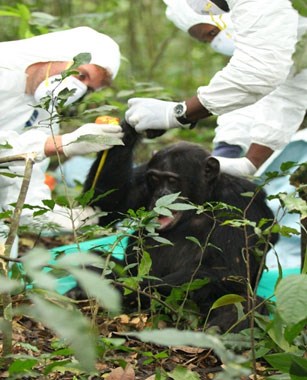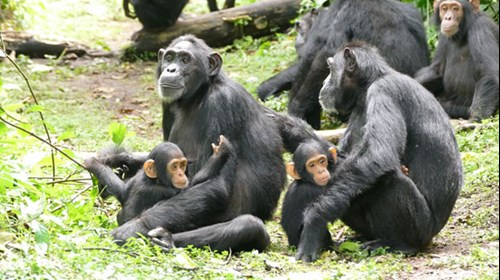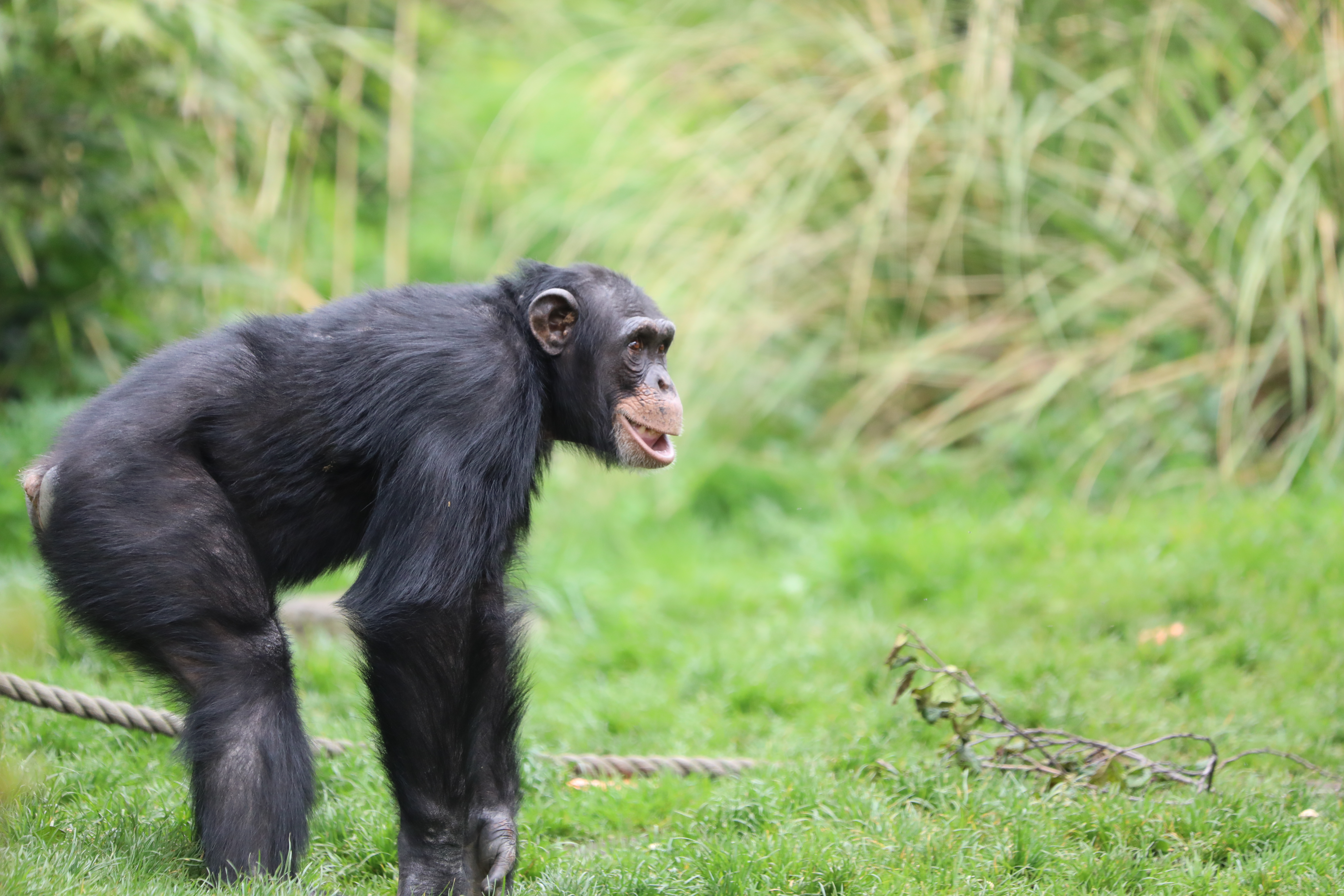Chimpanzee health monitoring
10/09/2016 in Conservation
By Carol Asiimwe, Resident Veterinary Doctor and Conservation Coordinator BCFS
Back in 2009, a great ape workshop was held in Entebbe, Uganda, bringing various conservationists and researchers together to forge a way forward for health monitoring among wild apes. The Jane Goodall Institute (JGI) and Budongo Conservation Field Station (BCFS) were asked to coordinate the chimpanzee research sites in the Albertine rift region in order to standardise data collection and guidelines. In many ways, this marked the beginning of health monitoring in wild chimpanzee communities in Uganda.
The collection of data,initially from just the Sonso chimpanzee community, has grown steadily over the years to now cover eight sites where chimpanzees have been habituated for either research or tourism. A total of over 750 chimpanzees are currently being monitored across the region. Data gathered includes; observed signs of disease e.g. coughing, sneezing, running nose, diarrhoea, wounds and skin infections, in addition to urine and faecal samples that are non-invasively collected for basic analysis in the laboratory at BCFS. Collecting health data in the wild is can be challenging and multifaceted, we are extremely grateful to the field teams at Sonso, Waibira and Kaniyo Pabidi in Budongo Forest, Kanyawara, Kanyanchu, Ngogo and Sebitoli in Kibale National Park and Kalinzu ecotourism site in Kalinzu Forest who have made this work possible.
Before chimpanzee health monitoring began, there were only a few wildlife veterinarians in the country who could respond in the case of an emergency, for example when a chimpanzee was caught in a snare or trap. Through generous funds from USAID, and later ARCUS Foundation, a team of wildlife veterinarians have now been trained. Thanks to this funding, many chimpanzees have been saved who would have otherwise lost their limbs, or even their lives, due to snares set by illegal hunters targeting other mammals in the ecosystem.

(Garret, an adult male of the Ngogo chimpanzee community had suffered a snare injury for 15 years)
While emergency interventions are currently undertaken for man-made injuries, the risk of disease transmission is increasing rapidly leading to some debate concerning intervention in such situations. Many people will argue that we shouldn’t intervene because of this risk and would rather let nature take its course, others argue that humans, by habituating chimpanzees and entering into their habitat, have already indirectly interfered with nature. Either way, increased contact between humans and chimpanzees, whether direct or indirect, has increased the risk for disease transmission in this naïve population.
In the past, habitat loss through forest fragmentation, degradation and hunting were considered the major threats to chimpanzee conservation, however, recently disease has also become a major concern. Most diseases threatening chimpanzees are of human origin. Humans and chimpanzees are very closely related, with a genetic difference of only 2%, which means that whatever disease can affect humans can also affect chimpanzees and vice versa. Therefore, humans also need to be protected from zoonotic diseases (diseases from an animal origin). Our primary health care and conservation education programme for the forest edge communities helps to tackle this issue.
The collaborative effort of many of our partners; the communities, Uganda Wildlife Authority, National Forestry Authority, the Jane Goodall Institute and all chimpanzee sites in the Albertine Rift region in western Uganda, provides real hope for the sustainability of the health monitoring programme and, most importantly, chimpanzee conservation for future generations!

(Kalema with her youngest son Kirabo (left) and Kutu with her son Kavera (right); are chimpanzees in the Sonso chimpanzee community, Budongo Forest Reserve. Photography credited to Jakob Villioth)
Featured Articles
Latest News
-
Blog

02/02/2021
Celebrating sixteen years of partnership with BCFS
The Royal Zoological Society of Scotland (RZSS) has partnered with the Budongo Conservation Field Station (BCFS) in Uganda since 2005. For 16 years we’ve worked together to protect the Budongo Forest and the 800 chimpanzees who call it home.
-
Blog

01/12/2020
Budongo Conservation Field Station Update
Your support has protected the chimpanzees of the Budongo Forest in Uganda for over 15 years, and this year it has meant more than ever.
-
Blog

13/04/2020
RZSS Goes Wild conservation video series
From our conservation team's living room, to yours! Our new #RZSSGoesWild web series will take you around the world via the amazing wildlife conservation projects we support.
-
News

28/02/2020
Travel to the wilds of Uganda with Dr Helen Senn
This October, join is for the trip of a lifetime to see giraffes and chimpanzees in the wild.



























Follow EZ